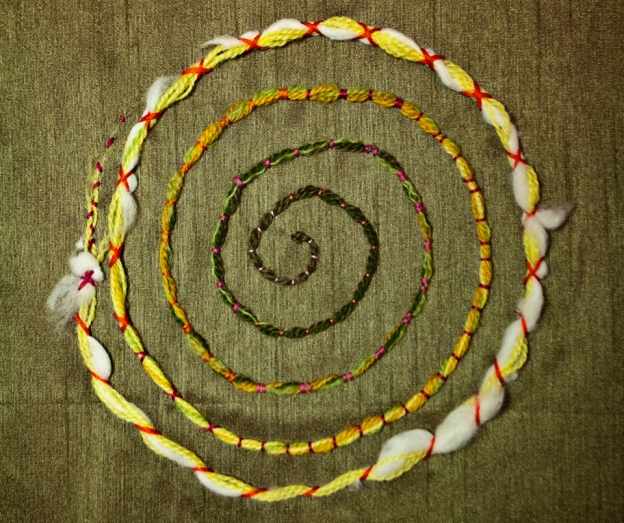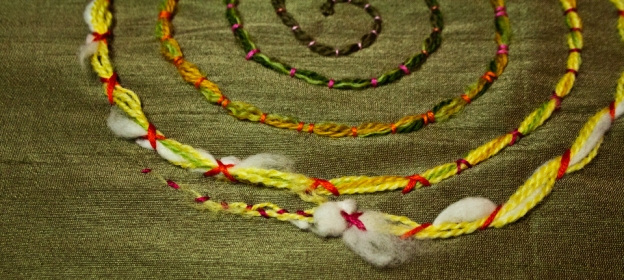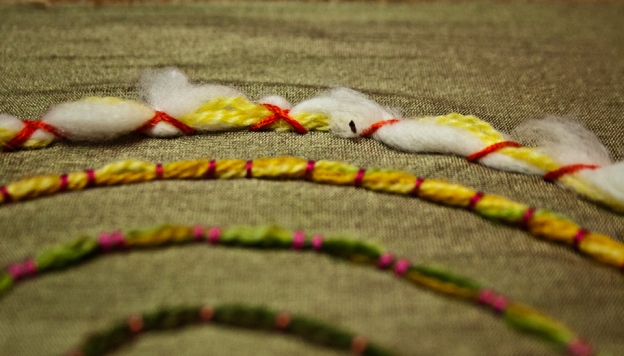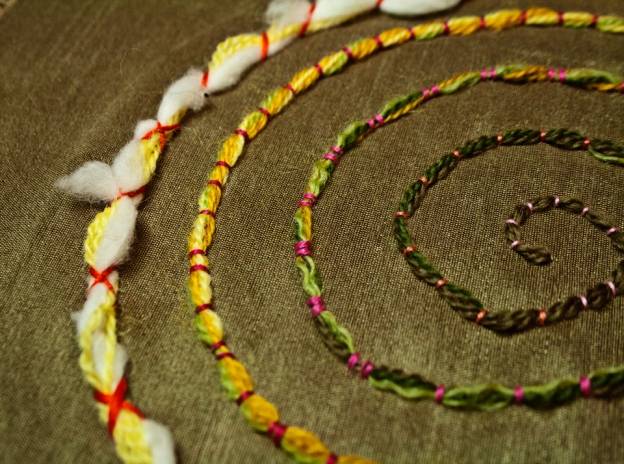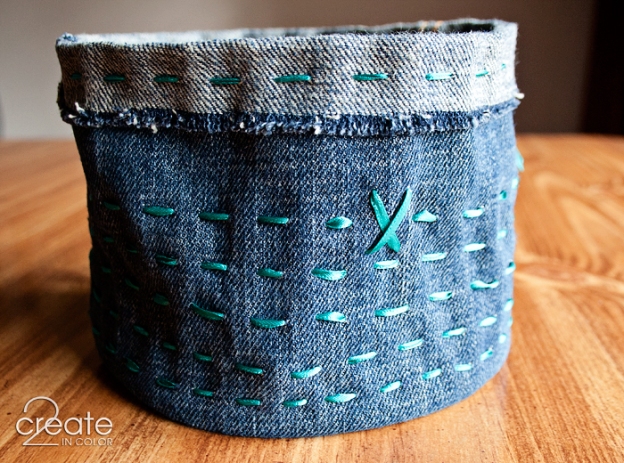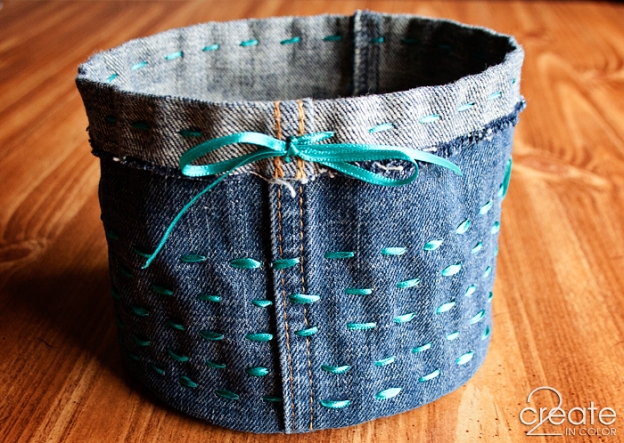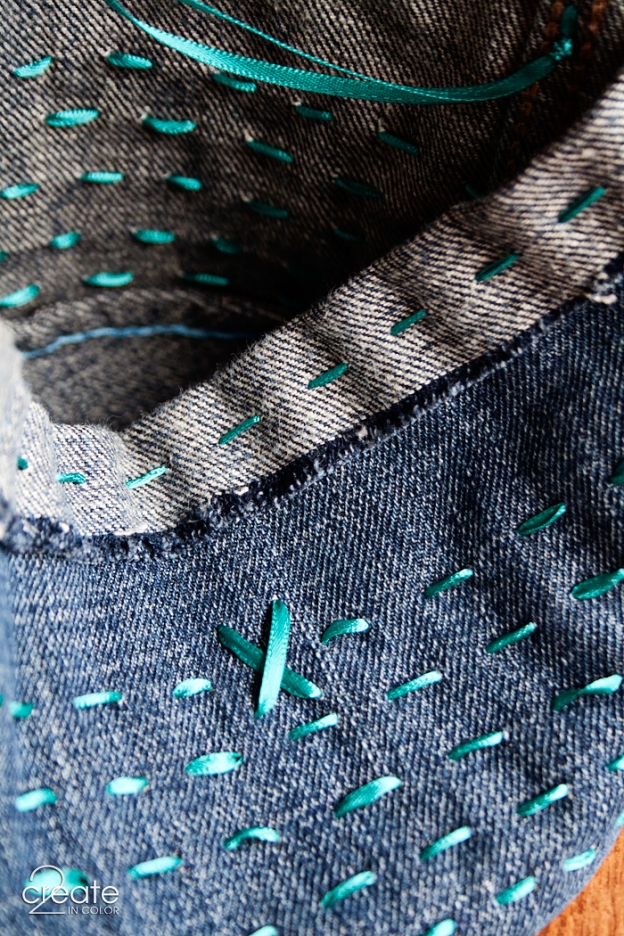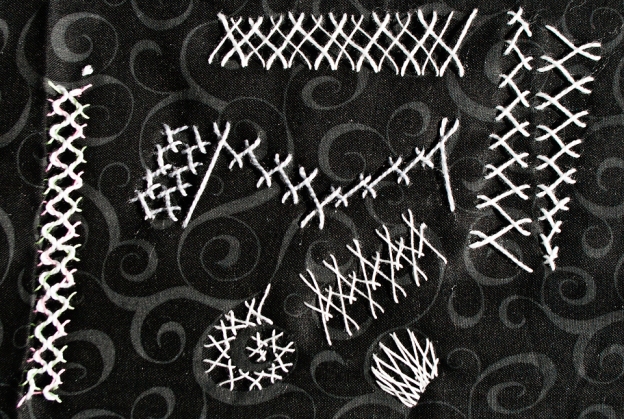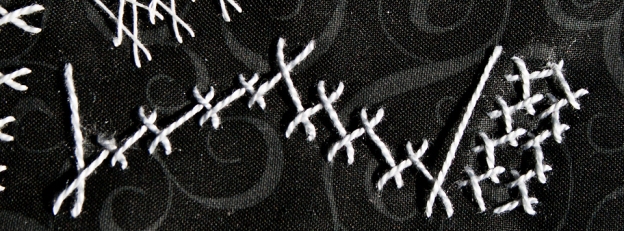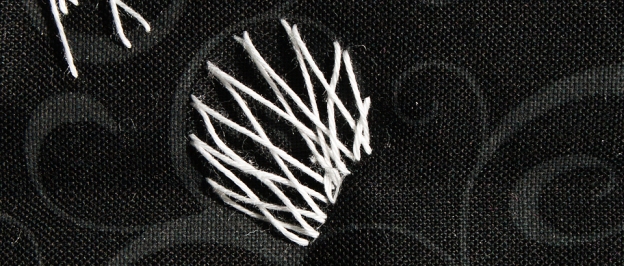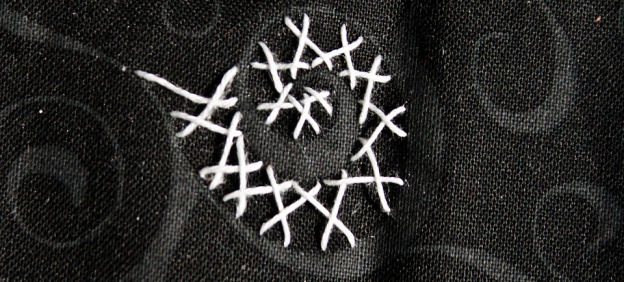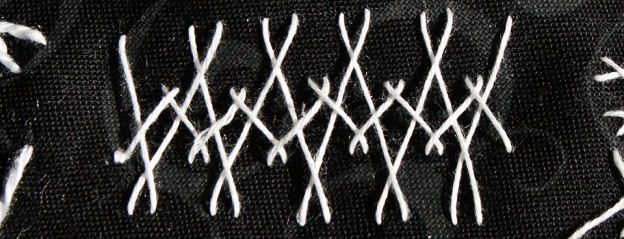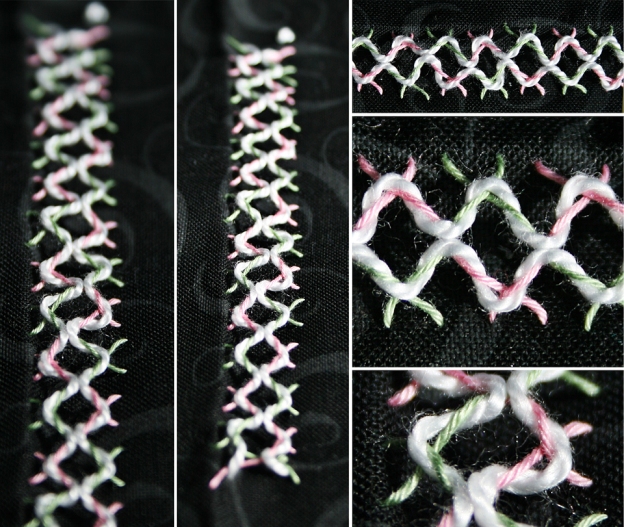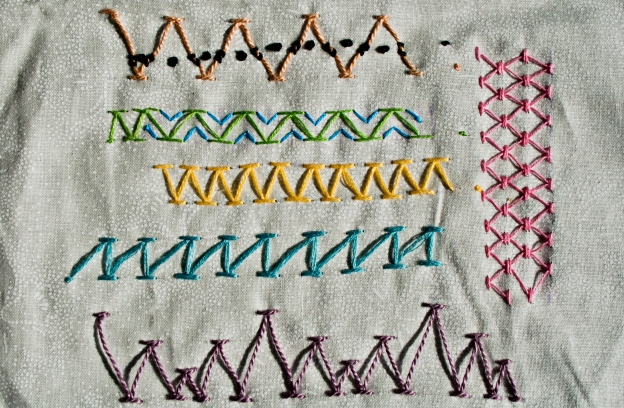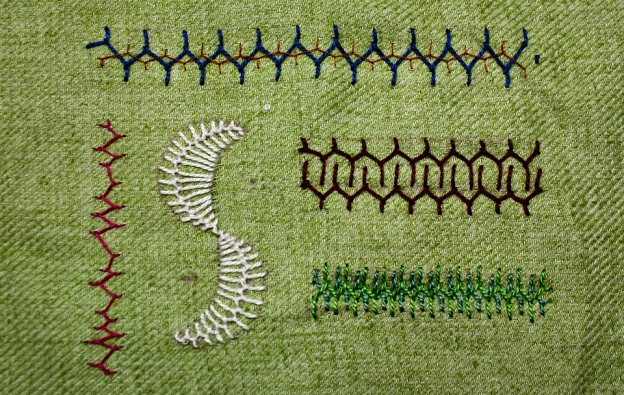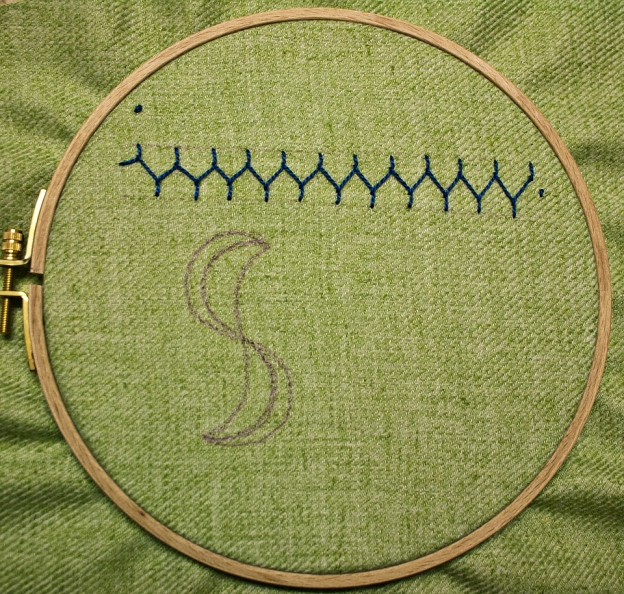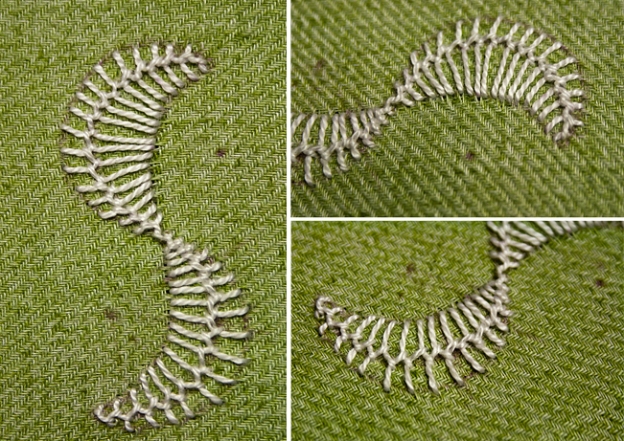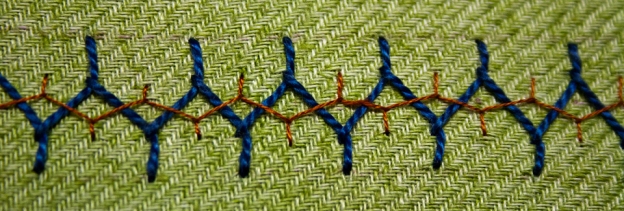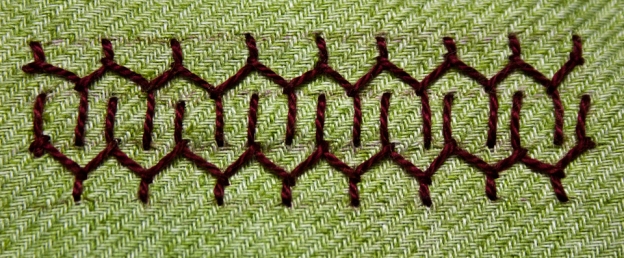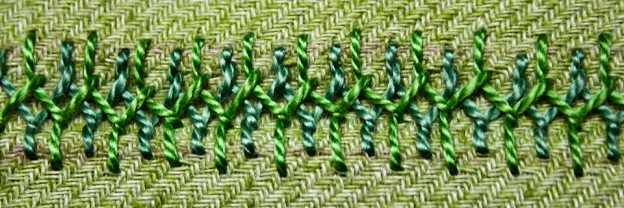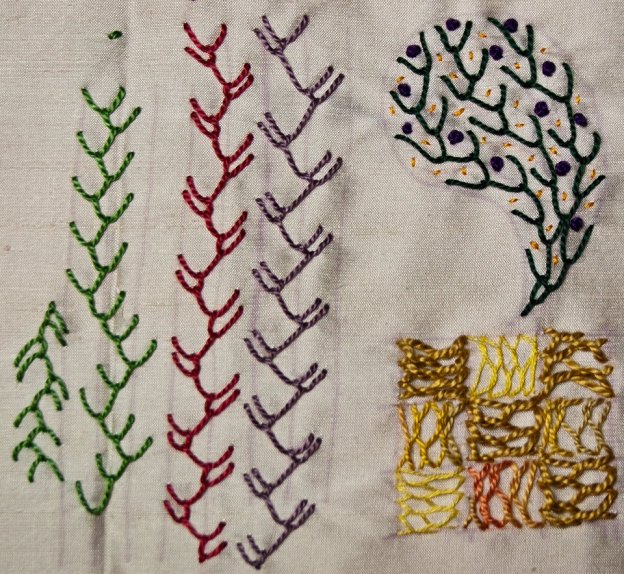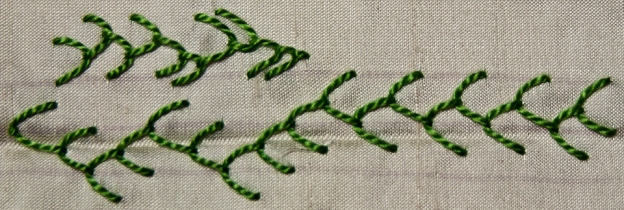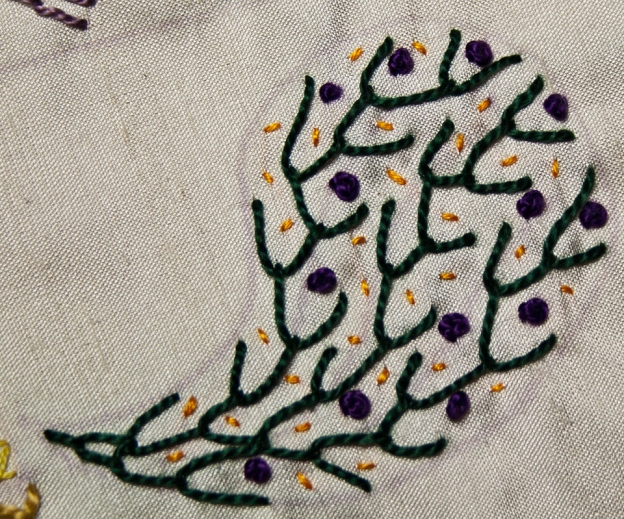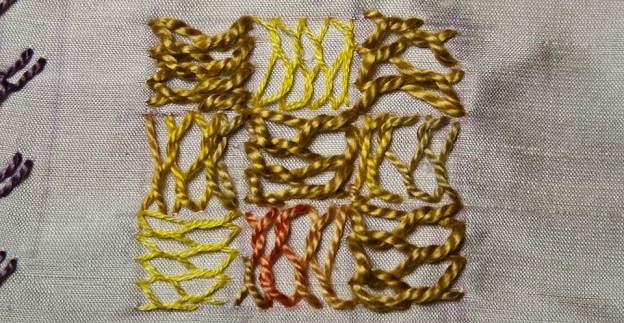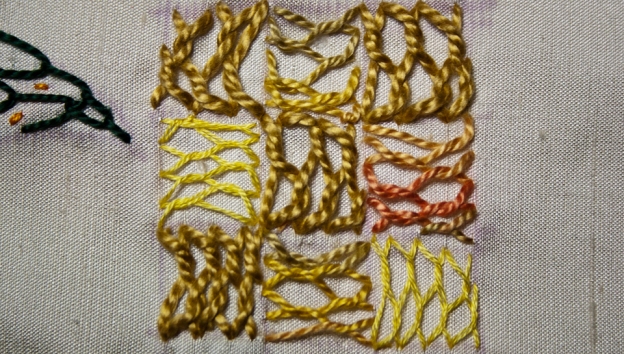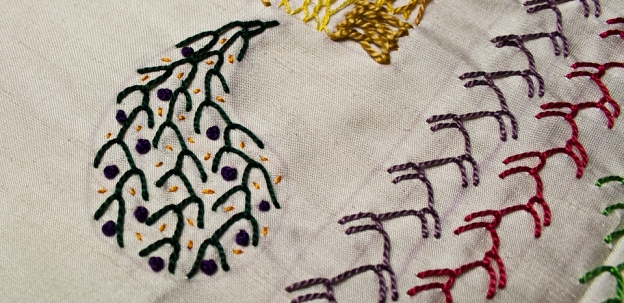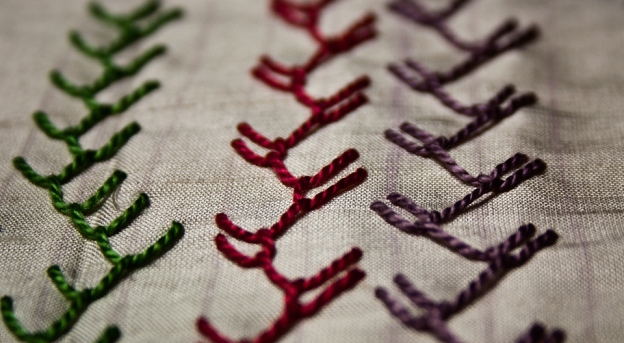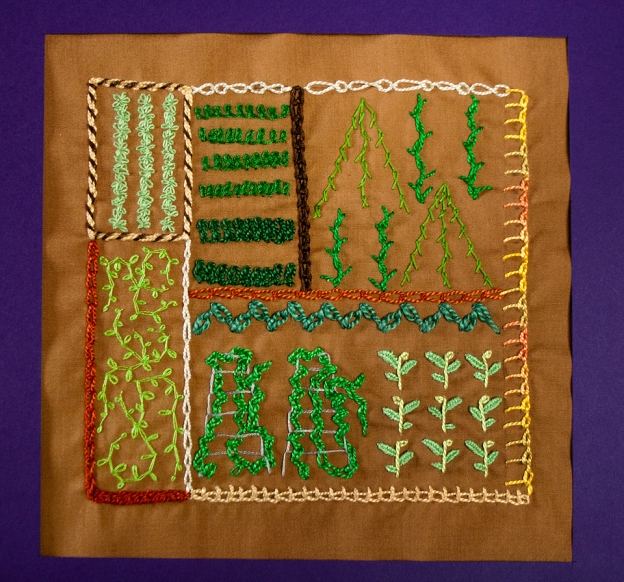
I never dreamed there were so many variations of Chain Stitch! It has always been one of my favorites. In my teenage years I would often stitch loopy lazy daisies on things — even now, typing this, I remember that I put that as my identifying mark on all my towels before I went off to college 🙂 That’s a happy memory!
Once I started thinking about doing my weekly TAST stitching for weeks #7 Detached Chain and #8 Chain, and realized just how many variations I had listed, I thought something more than just my normal doodle cloth experiments would be nice.
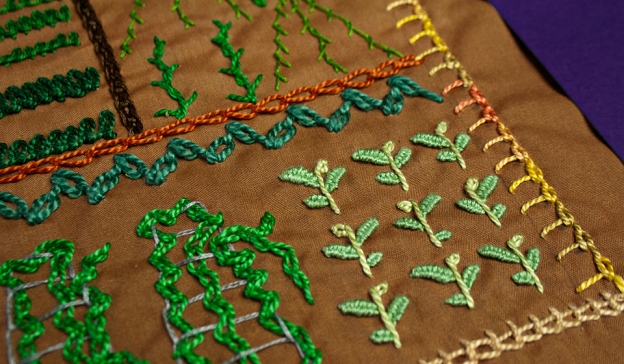
And suddenly I needed to stitch up a garden! I guess it makes sense with spring being in the air. Plus I love all things green 🙂 including herbs and vegetables! Certainly there were enough variations of chain stitch for a garden of leaves.
Here’s the run down on my garden, from top left across, to bottom right:
- Detached chain Stitch “lettuce rows” (used my new awesome coton a broder)
- Rosette Stitch “spinach” (aah, yes, need lots more practice on this finicky stitch)
- Alternate Barred Chain and Barred Chain for the “beans” and “corn” (Some of the twists have been inverted*, so the barb sticks out from underneath instead of on top — just playing around.) Oh, and I forgot these got their own week later! I was in a chain stitch frenzy!
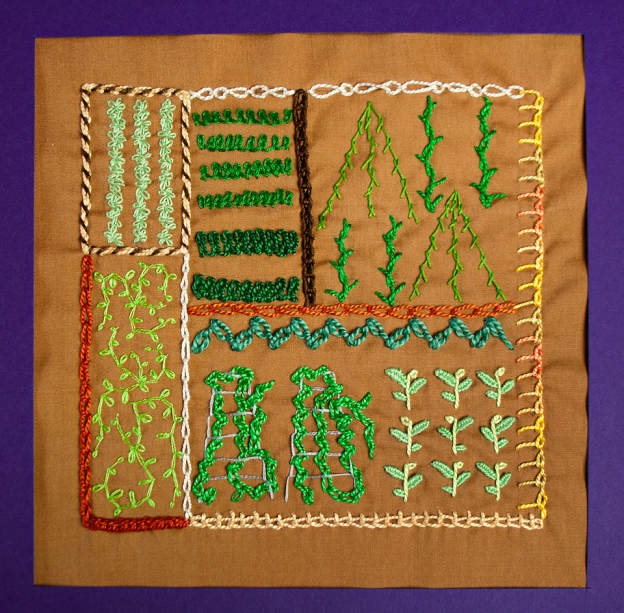
more
- Chain (very long skinny ones in a single strand of floss) and Detached Chain for the … let’s call ’em “cucumber vines”
- Feathered Chain for the “chard” in the beefy size 3 perle cotton
- Open Chain for the trellises (gray)
- Zig Zag Chain for the … some other kind of climby vine vegetable! Tomatoes?
- Woven Detached Chain for the “peppers” in a double strand of coton a broder; double strand was not the best idea in the world.
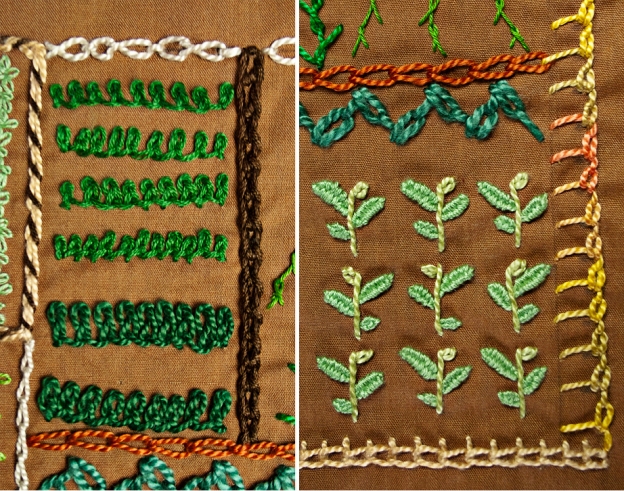
The garden beds are defined by (counter clockwise):
Whipped chain (tan/brown), Chain and Reverse chain (vertical lower left, switching in the middle), Heavy Chain (horizontal lower left), Sailor Stitch (bottom, tan), Sailor’s Knot (vertical right), and —
— My own combination/variation needing a name!* (top edge) I think this combination stitch looks kind of like a jewelry chain — what do you think?

My new combination of Twisted and Reverse Chain stitch
Continuing through the middle borders: my own variation of a double-whipped chain* (brown, vertical center), Ye Olde Basick Chaine (center horizontal) and a long, barely Twisted chain (tan, inner left.)
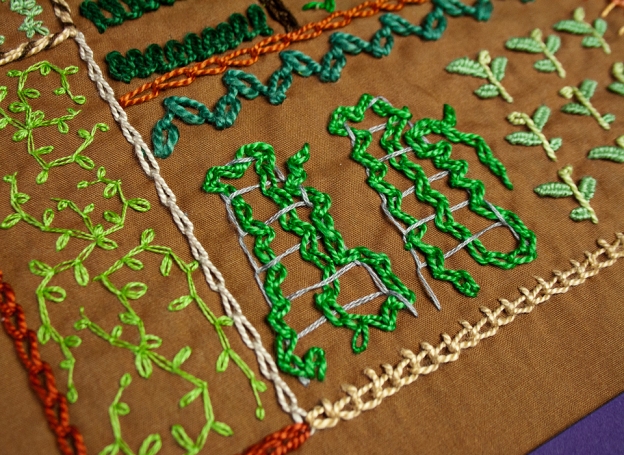
* In the spirit of experimenting, and because the already-included FIFTEEN STITCHES weren’t enough (right?) I got creative. That’s code for: I can never leave well enough alone LOL Here are the details if you want:
- when I was working the Alternate Barred chain “corn”, I tried twisting the stitch in the opposite direction on two of the stalks, so the “leaves” appear to stick out from behind and so there is a more linear/continuous suggestion of a stalk. It’s subtle.
- the double-whipped chain border, near the left top in dark brown, has first one edge of the stitches whipped, and then the other. It kind of pulls the stitch apart and makes it bolder; the edges have a bit more lumpy/textural appearance, too. I didn’t try it with a contrasting color, but I will be.
- and my own creation, the two-stitch combination using both twisted, and the reverse technique. One longish twisted chain is worked, with a bit longer anchor stitch than normally needed. A short reverse chain is worked into that anchor stitch. I made it short enough that it looks roundish with my thread choice (that was my intent, anyway.) The “feet” of the next twisted chain are tucked inside and overlapping the feet of the reverse stitch. All of the entry and exit points for both types of chain stitch used are worked the same small distance away from the center stitching line.
I really like the rhythm of this combo I put together — so far, it is like the rhythm of a 5th grade band: a little rough but you know what it should be 😉 My spacing is getting better as the weeks go by, but I know I have a ways to go!
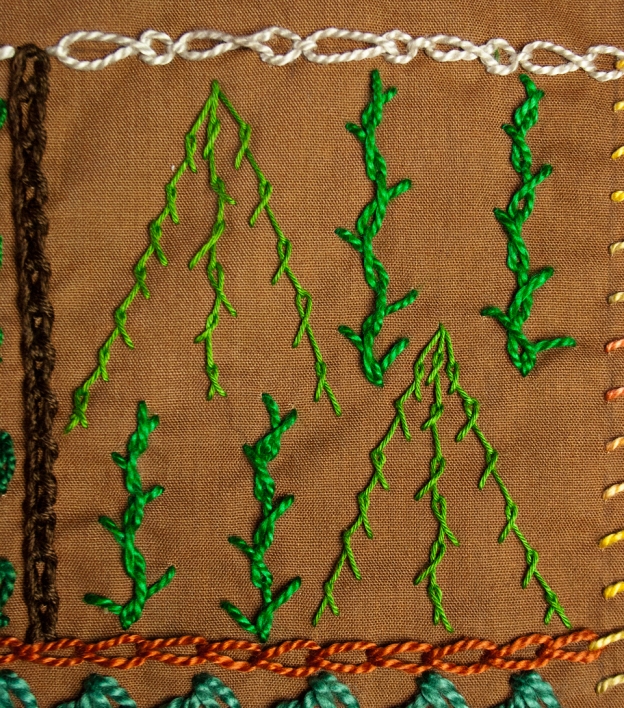
Making this project was a fun way to enjoy all the chain stitch variations, but with all the other creative thoughts and projects whizzing around in my house and my head, I’ll be making a boring, first-timer doodle cloth style of sampler for Couching!
Happy Stitching!
Gail
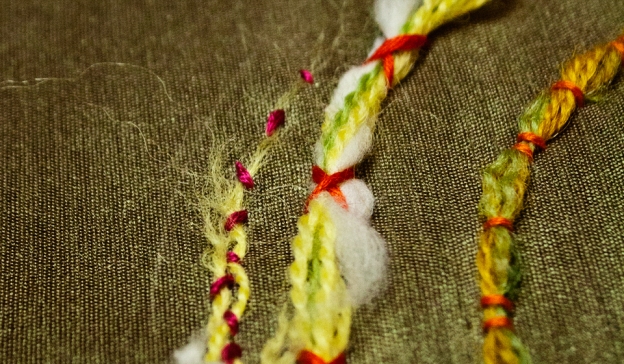 I couched those yarn ends (they were hard to break/shred!) down to the very last fibers 🙂
I couched those yarn ends (they were hard to break/shred!) down to the very last fibers 🙂